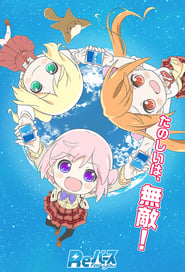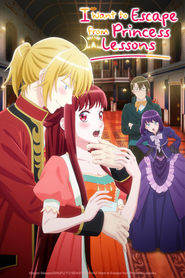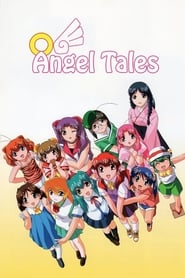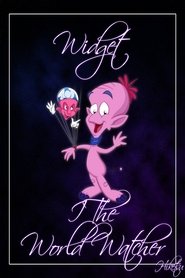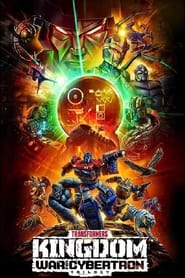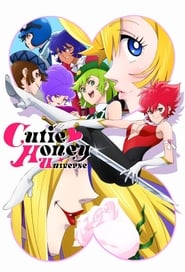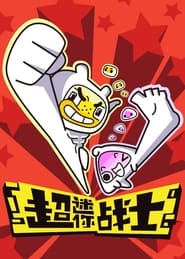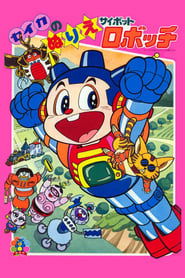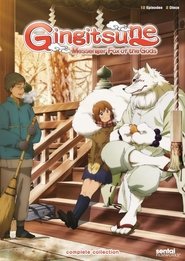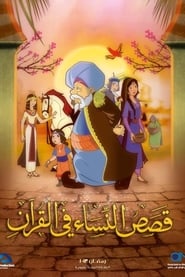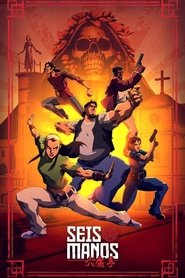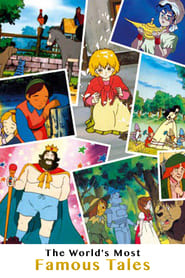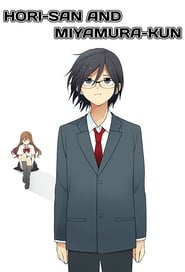Popular Animation TV Series on Pantaflix - Page 244
-
Rebirth
2020
-
I Want to Escape from Princess Lessons
2025
star 7.6Leticia Dorman, daughter of a duke, is less than thrilled to be engaged to a crown prince. Betrothed since childhood and trained to be queen, she always hoped Prince Clarke would fall for someone else one day. So when he shows up at a ball with another woman, Lettie excitedly retreats to the countryside to start her new life—only for Clarke to appear, determined to win her heart. -
Rilakkuma's Theme Park Adventure
2022
star 7.6Rilakkuma, Korilakkuma, Kiiroitori, and Kaoru are off on an adventure to the theme park, but with closing time imminent it leads to a series of fun mishaps and incidents as the group squeeze a day of fun into tiny amount of time. -
Ultraman Omega
2025
Ultraman Omega
2025
star 9On an Earth where neither heroes nor kaiju exist, an alien suddenly falls from the sky. This Ultra’s symbol is the red space boomerang he holds, the Omega Slugger, and his name means “ultimate.” “Omega” is an alien who has lost his memories. Taking human form and adopting the name “Sorato”, he becomes interested in the life forms called “Earthlings” that he is encountering for the first time and attempts to understand them. When a giant life form appears, amnesiac Sorato recalls a word—“kaiju”. As these kaiju continue to appear before him, a sense of duty awakens in Sorato’s subconscious. He transforms into “Ultraman Omega” and an intense, fast-paced fight unfolds. The Earthlings, in turn, are grappling with encountering these gigantic life forms and the alien that fights with a red slugger for the first time, watching from various places and trying to understand what they are. Before long, Sorato and an ordinary young man& -
Invaders of the Rokujouma!?
2014
star 5.6Kōtarō Satomi decided to live on his own when he began high school, and chose Room 106 of Corona House because it was cheap. Unfortunately, Kōtarō soon discovers that numerous otherworldly and supernatural girls also want his room for various reasons of their own, and aren't about to back down. As a result, Kōtarō and the girls find themselves forced to live together as they try to settle just who ends up with the room. -
Angel Tales
2001
Angel Tales
2001
star 8.7Goro keeps losing jobs and has little money. One day he meets a fortune-teller outside of a pet store who predicts that his luck will change. That night three girls appear in his apartment claiming to be his guardian angels. -
Widget the World Watcher
1990
star 4.9Widget, the World Watcher is an animated television series which debuted in syndication on September 29, 1990. The series ran for two seasons; in the first season, it aired once a week, and in the second season, the series expanded to 5 days a week. The show featured environmentalist themes and was recognized by the National Education Association as recommended viewing for children. -
Transformers: War for Cybertron: Kingdom
2021
star 7.7The frantic race to locate the Allspark first culminates on a strange planet as the future comes crashing through to the present day. -
Kanamemo
2009
Kanamemo
2009
star 6.1The story centers on Kana Nakamichi, a middle-school girl who had already lost her parents and just recently lost her only remaining relative, her grandmother. As a result, she ends up living and working at a newspaper delivery office. Everyone else living at the office are all charming, self-assertive bishōjo. The show follows Kana’s daily life in the fast-paced yet joyous environment. -
Cutie Honey Universe
2018
Cutie Honey Universe
2018
star 5.5Honey Kisaragi is an amazingly humanlike and fashion conscious android with the unique ability to transform her body into a wide range of outrageous yet stylish disguises, each of which comes with its own dazzling super ability. After a run-in with a sinister secret criminal cabal organization, Panther Claw, the luscious and law-abiding Honey makes it her mission to bring them down. -
Mini Mind Warriors
2017
Mini Mind Warriors
2017
-
A Salad Bowl of Eccentrics
2024
star 6.5Sosuke Kaburaya is a detective struggling to make ends meet. While on a case, he happens upon Sara da Odin, a princess from another world who wields magical powers. Sara quickly adjusts to modern Japanese life as Livia de Udis, a knight from Sara’s kingdom, arrives to find her. Soon enough, both Sara and Livia’s positivity begins to rub off on Sōsuke and the neighborhood’s cast of characters. -
Mermaid's Forest
2003
Mermaid's Forest
2003
star 5.3According to an ancient Japanese legend, mermaid flesh may grant immortality if eaten. However, there is a much greater chance that consumption will lead to death or transformation into a damned creature known as a Lost Soul. Mermaid Saga tells the tale of Yuta, an immortal who has been alive for five hundred years. Throughout the series, he wanders across Japan searching for a cure and meets others whose lives have also been ruined by mermaid flesh. -
Robby the Rascal
1982
Robby the Rascal
1982
Cybot Robotchi, known in the United States as Robby the Rascal, is a 39-episode anime television series created by Ken Ishikawa and produced by Go Nagai's Dynamic Productions and the Knack animation studio. The series aired on TV Tokyo in Japan from October 1982 to June 1983. The series featured contributions from Tetsuro Amino as a storyboard artist and Masayuki Kojima as an episode director. A feature-length English-dubbed version comprising several episodes edited together into a movie, titled Robby the Rascal, was produced by Jim Terry's Kidpix Productions and released on home video in the United States in 1985. However, the English version deleted much of the risque humor that, while not uncommon in children's animation in Japan, would be considered unacceptable by American standards, with the policewoman Sachiko being the usual target of the fan service-oriented humor. The TV series also aired in its entirety in Italy under the title Robottino, and some episodes are also available in Spanish as Robotete. -
Gingitsune: Messenger Fox of the Gods
2013
star 7.7Gintarou is a fox spirit that has been protecting the small Inari temple since the Edo era. Saeki Makoto's family possesses the power to see the gods' agent, but the ability is limited to one living relative at a time. When Makoto's mother passed away while she was still young, Makoto inherited the ability as the sole remaining family member. With the help of fox spirit's power, Makoto and Gintarou help the people of their community, in spite of their many differences. -
Thunderbirds 2086
1982
Thunderbirds 2086
1982
star 6Thunderbirds 2086 is a Japanese anime series loosely inspired by the original Gerry Anderson Supermarionation series Thunderbirds. The series was dubbed in English by ITC Entertainment, the original company who produced Thunderbirds, but is not officially recognised as part of Thunderbirds canon, due to the non-involvement of either Gerry or Sylvia Anderson. Despite this the English dub of the series contains music and sound effects from Anderson's series Stingray, Thunderbirds, Captain Scarlet and the Mysterons, Joe 90, UFO and Space:1999. A total of 24 episodes were produced, but only 18 were shown on Fuji TV in 1982. -
Stories In Quran
2011
Stories In Quran
2011
-
Seis Manos
2019
Seis Manos
2019
star 6.6Orphans raised by a martial arts master are plunged into a mystery involving demonic powers, drug cartels, ancient rituals and blood sacrifice. -
The World's Most Famous Tales
1995
star 7.7Based on Western tales from the usual suspects: 1001 Nights, C. Perrault, Beaumont, J. & W. Grimm, H. C. Andersen, C. Collodi, English fairytale, H. Pyle, L. Carrol, J. Swift, A. Dumas, E. T. A Hoffman, L. F. Baum, and J. Spyri. Only 21 stories were broadcast, with the last five being released on VHS. -
Hori-san and Miyamura-kun
2012
star 7.9Within everyone there exists a side preferably kept hidden, even from close friends. For the smart and popular Kyouko Hori, it’s the fact that she has to do all the housework and care for her little brother, Souta, because of her parents' busy work schedules. For the gentle Izumi Miyamura, whom everybody sees as an otaku, it's his nine hidden piercings and large body tattoo. So what happens when they accidentally discover each other's hidden sides? Sharing parts of themselves that they couldn't with anyone else, strong bonds of friendship soon begin to form between Miyamura and Hori, as well as those around them. As their hidden personas start to dissipate, they slowly learn how to open up to others.
 Netflix
Netflix
 Amazon Prime Video
Amazon Prime Video
 Apple iTunes
Apple iTunes
 Apple TV Plus
Apple TV Plus
 Disney Plus
Disney Plus
 Google Play Movies
Google Play Movies
 Paramount Plus
Paramount Plus
 Hulu
Hulu
 HBO Max
HBO Max
 YouTube
YouTube
 fuboTV
fuboTV
 Peacock
Peacock
 Peacock Premium
Peacock Premium
 Amazon Video
Amazon Video
 The Roku Channel
The Roku Channel
 AMC+
AMC+
 Kocowa
Kocowa
 Hoopla
Hoopla
 The CW
The CW
 Vudu
Vudu
 Starz
Starz
 Showtime
Showtime
 PBS
PBS
 Pantaflix
Pantaflix
 FXNow
FXNow
 Tubi TV
Tubi TV
 Kanopy
Kanopy
 Comedy Central
Comedy Central
 Crunchyroll
Crunchyroll
 Microsoft Store
Microsoft Store
 Redbox
Redbox
 Sun Nxt
Sun Nxt
 ABC
ABC
 DIRECTV
DIRECTV
 Crackle
Crackle
 Fandor
Fandor
 Plex
Plex
